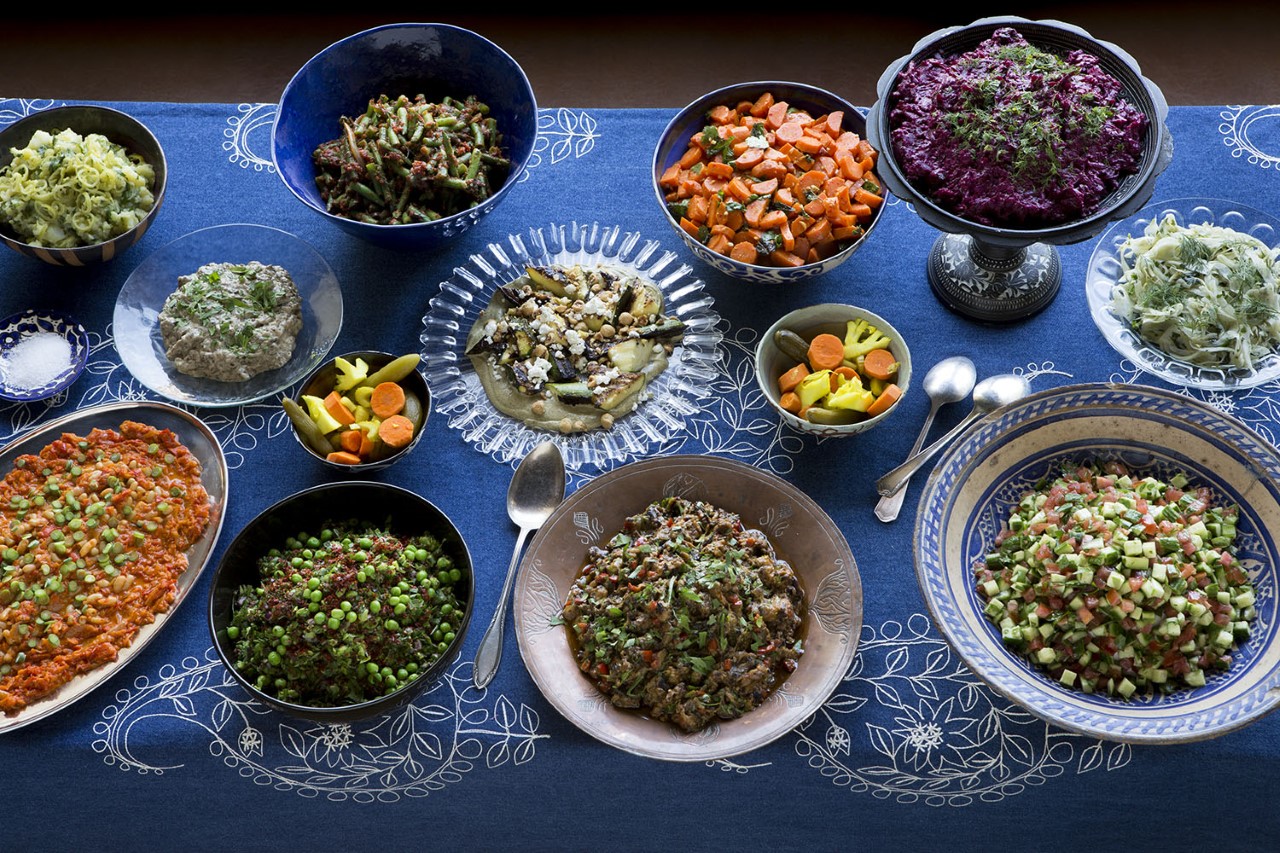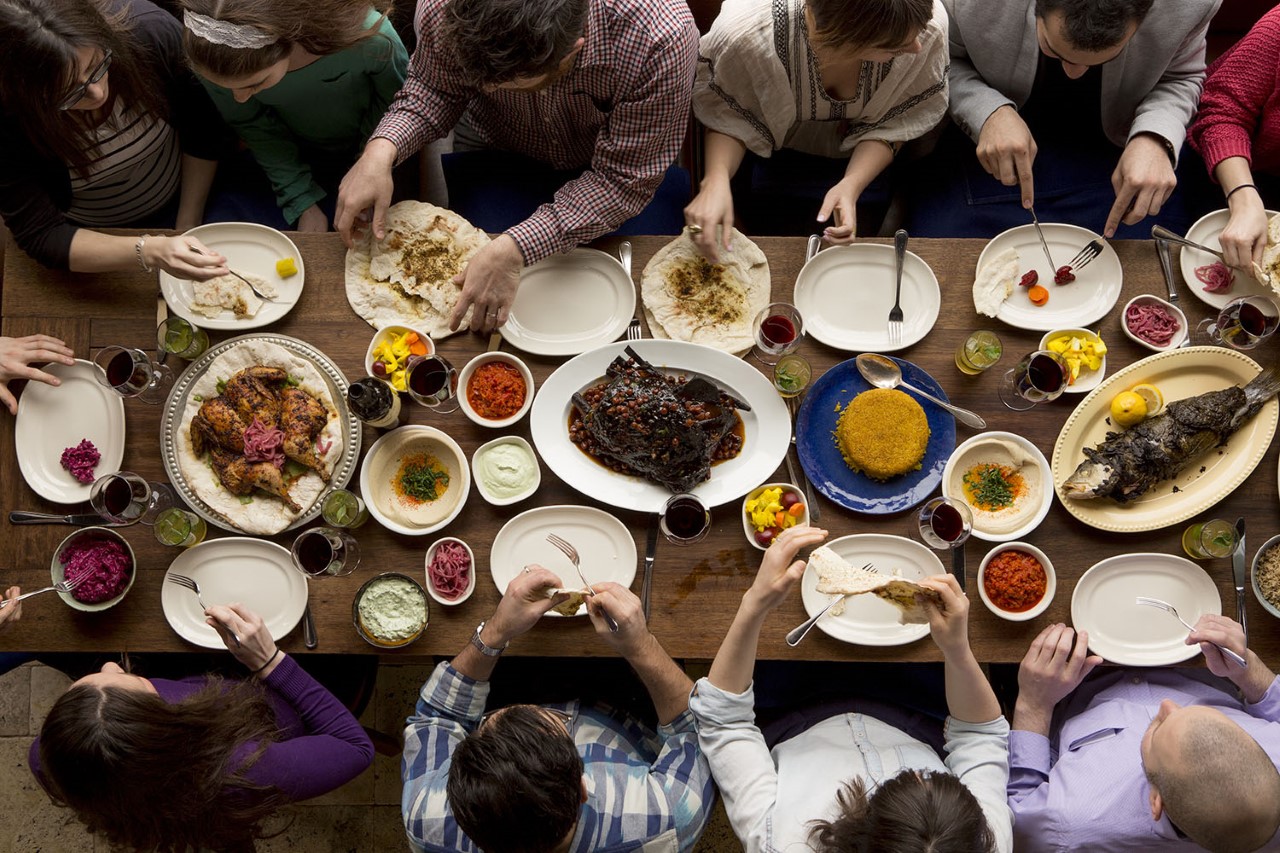Zahav Wins Book Of The Year At James Beard Awards

Steven Cook and Michael Solomonov | Photo by Kent Miller Studios
Know what that is right there? That’s what victory looks like.
A double victory, actually, as Michael Solomonov’s book Zahav: A World Of Israeli Cooking took home both Best International Cookbook and Book Of The Year at this year’s James Beard Awards
The awards were given out last night and, obviously, Cook and Solomonov were there to accept those medals in person. Unfortunately, they were the only local names to show up during the Broadcast and Journalism awards last night, but that’s cool. It’s not like Philly hasn’t brought back their share of gold over the years.
In the meantime, we reached out to Solomonov’s team and got some of Michael Persico‘s beautiful shots from the book, plus two recipes: one for beets with tehina, and another for shakshouka.
Check ’em all out after the jump.

Photo courtesy Michael Persico

Photo courtesy Michael Persico

Photo courtesy Michael Persico

Photo courtesy Michael Persico

Photo courtesy Michael Persico
From Zahav: A World Of Israeli Cooking
Beets with Tehina
Beets with Tehina
Makes 4 cups
Beet salads are frequently paired with something acidic to cut through the sweetness of the vegetable: goat cheese, yogurt, or a bright, citrusy vinaigrette. This recipe takes a different approach, using the slight bitterness of tehina to tame the sugar and heighten the earthiness of the beets. The combination is magical, capable of casting a spell on people who normally don’t like beets. This beet salad is one of a handful of dishes that have been on the Zahav menu every day since we opened—we should post a sign that says, “Over half a million served.”
5 cups plus ½ teaspoon kosher salt
8 medium beets
½ cup Basic Tehina Sauce (page 32)
½ cup olive oil
¼ cup lemon juice
¼ cup chopped fresh dill, plus more for topping
2 tablespoons chopped fresh mint, plus more for topping
Preheat the oven to 375°F. Spread 1 cup of the salt in an ovenproof skillet or baking dish. Put the beets on the salt and cover with the remaining 4 cups salt. Bake until the beets are tender, about 90 minutes.
When they are cool enough to handle, remove the beets from the salt and
peel. Set them aside to cool completely.
Grate the the beats into a mixing bowl using the coarse holes of a box grater. Add the tehina sauce, lemon juice, dill, and mint and season with ½ teaspoon salt. Mix well to blend. Top with more chopped dill and mint
and serve at room temperature or cold
From Zahav: A World Of Israeli Cooking
Shakshouka
Shakshouka
Serves 8
Construction at Zahav took place during the dead of winter 2008. Since there was no heat in the building, our contractor, Ofer Shlomo, brought in propane-fired space heaters to keep his crew from freezing. The heaters were cylindrical, with flat metal tops—perfect for heating up a frying pan. And so, of course, Ofer made shakshouka. Shakshouka is a simple and quick North African dish of eggs poached in a spicy stew of tomatoes and peppers that packs a punch. It’s a great, large-format brunch dish to feed a crowd. Shakshouka is another great example of a dish that came from elsewhere but is now essential to Israeli cuisine. (On a recent trip to Israel, I even had shakshouka at a gas station diner.)
Much of this has to do with economics. Tomatoes and peppers grow year-round in Israel, and eggs are an inexpensive source of protein. Shakshouka became an economical way to create a nutritious and flavorful meal. Shakshouka is a stovetop dish, and that ease of preparation contributed to its popularity. It’s also a very fun word to say. This recipe is a very straightforward version, but shakshouka can be bedazzled with all sorts of things, from merguez (or any other sausage) to feta or Parmesan cheese. It’s easily scaled up or down depending on your crowd. But the most important question: What kind of bread will you choose to sop up every last drop of sauce?
½ cup olive oil
2 onions, chopped (about 3 cups)
4 red or green bell peppers, chopped
6 garlic cloves, sliced
2 tablespoons ground dried lime (see page 92) (optional)
6 tablespoons sweet paprika
2 teaspoons ground cumin
2 teaspoons ground coriander
½ teaspoon kosher Salt
8 cups tomato puree
1 tablespoon plus 1 teaspoon sugar
16 large eggs
Serrano chiles, thinly slice
Fresh cilantro, chopped
Heat ¼ cup of the olive oil over medium in a cast iron skillet large enough to accommodate 16 poached eggs. (If you don’t have a skillet that large, use two pans, dividing the ingredients evenly between them.) Add the onions, bell peppers, garlic, dried lime (if using), paprika, cumin, coriander, and salt and cook, stirring occasionally, until the vegetables haven softened but not browned, about 10 minutes. Add the tomato puree and sugar and simmer until reduced by about one-third, 10 to 12 minutes. Whisk in the remaining ¼ cup oil.
Crack the eggs into the skillet, spacing them evenly in the sauce. Lower the heat, cover, and cook until the egg whites are set but the yolks remain runny, about 5 minutes. Top with serrano chiles and cilantro and serve immediately right from the pan.
Zahav: A World Of Israeli Cooking [Amazon]


